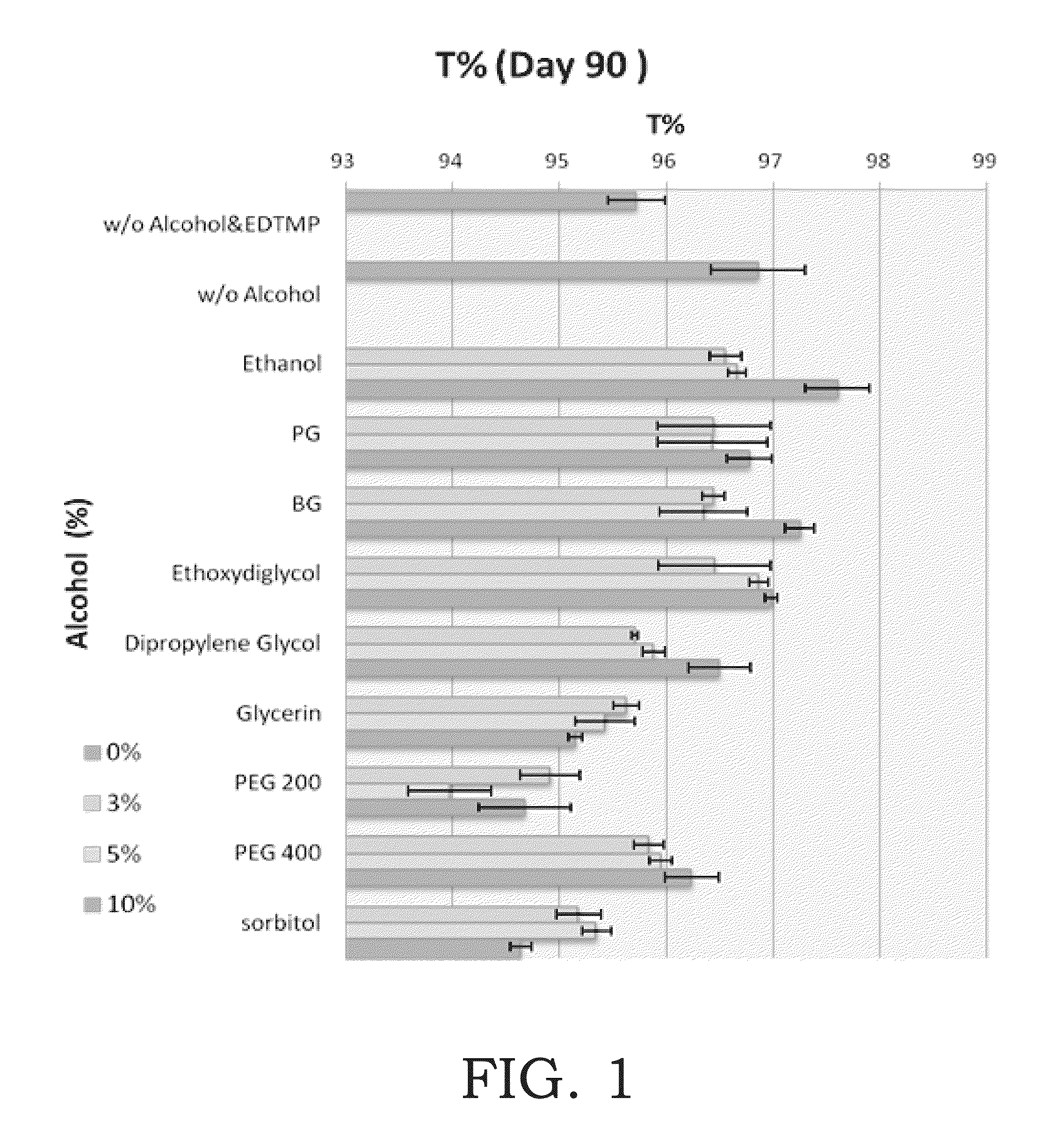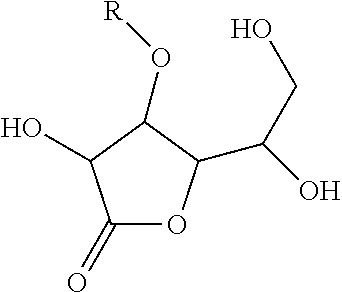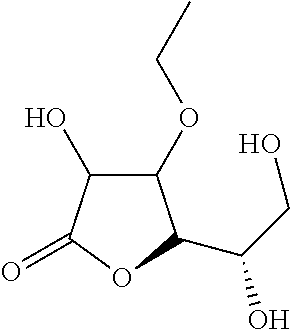Method for Stabilizing Ascorbic Acid Derivatives and the Application Thereof
a technology of ascorbic acid and derivatives, applied in the field of ascorbic acid derivatives composition, can solve the problems of vitamin c instability, easy oxidation and degradation, and poor vitamin c stability, so as to minimize the color change of ascorbic acid derivatives solution, reduce the degradation of ascorbic acid derivatives, and minimize the effect of ascorbic acid derivative composition color chang
- Summary
- Abstract
- Description
- Claims
- Application Information
AI Technical Summary
Benefits of technology
Problems solved by technology
Method used
Image
Examples
example 1
[0038]For testing the pH decline, 3-O-ethyl ascorbic acid is dissolved in water, and the aqueous solution is placed at 45° C. for 90 days. The test result is presented as the following Table 1. In Entry 1, 1 g 3-O-ethyl ascorbic acid was dissolved in purified water to 100 g form 2% (w / w) solution. In Entry 2, 2 g 3-O-ethyl ascorbic acid and 0.0007 g sodium citrate were dissolved in purified water to 100 g. In Entry 3, 2 g 3-O-ethyl ascorbic acid, 1.52 g sodium citrate and 0.926 g citric acid were dissolved in purified water to 100 g. In the above experiments, the total amount of the sample that contains the appropriate amount of the preservative.
As shown in Entry 3 in Table 1, buffer system is helpful to stabilize the pH of 3-O-ethyl ascorbic acid solution.
example 2
[0039]In this example, we try to find out the relationship between the pH value and the transmittance (color change) of ascorbic acid derivative solution. In this example, the following solutions were placed at 45° C. for 90 days, and the transmittance of the solutions on Day 0 and Day 90 were respectively detected. Table 2 presents the result of this example. In Entry 4, 0 g 3-O-ethyl ascorbic acid, 1.558 g sodium citrate and 0.993 g citric acid were dissolved in purified water to 100 g as the first blank experiment. The pH value of the mentioned first blank experiment is 4.49. In Entry 5, 0 g 3-O-ethyl ascorbic acid, 1.97 g sodium citrate and 0.695 g citric acid were dissolved in purified water to 100 g as the second blank experiment. The pH value of the mentioned second blank experiment is 5.00. In Entry 6, 2 g 3-O-ethyl ascorbic acid, 1.52 g sodium citrate and 0.926 g citric acid were dissolved in purified water to 100 g. The pH value of the solution is 4.51. In Entry 7, 2 g 3-O...
example 3
[0041]In this example, we try to compare the stability of ascorbic acid and ascorbic acid derivative solution with buffer. In this example, the following solutions were placed at 45° C. for 90 days, and the transmittance of the solutions on Day 0 and Day 90 were respectively detected. Table 3 presents the result of this example. In Entry 8, 2 g 3-O-ethyl ascorbic acid, 1.52 g sodium citrate and 0.926 g citric acid were dissolved in purified water to 100 g. In Entry 9, 2 g L-ascorbic acid, 2.292 g sodium citrate, 0.367 g citric acid were dissolved in purified water to 100 g. The pH value of the solutions in these examples were 4.50. In this example, the transmittance is detected at 440 nm.
As shown in Table 3, according to the color change of the samples, it is obviously that 3-O-ethyl ascorbic acid is more stable than L-ascorbic acid.
PUM
| Property | Measurement | Unit |
|---|---|---|
| wavelength | aaaaa | aaaaa |
| pH | aaaaa | aaaaa |
| total weight | aaaaa | aaaaa |
Abstract
Description
Claims
Application Information
 Login to View More
Login to View More - R&D
- Intellectual Property
- Life Sciences
- Materials
- Tech Scout
- Unparalleled Data Quality
- Higher Quality Content
- 60% Fewer Hallucinations
Browse by: Latest US Patents, China's latest patents, Technical Efficacy Thesaurus, Application Domain, Technology Topic, Popular Technical Reports.
© 2025 PatSnap. All rights reserved.Legal|Privacy policy|Modern Slavery Act Transparency Statement|Sitemap|About US| Contact US: help@patsnap.com



